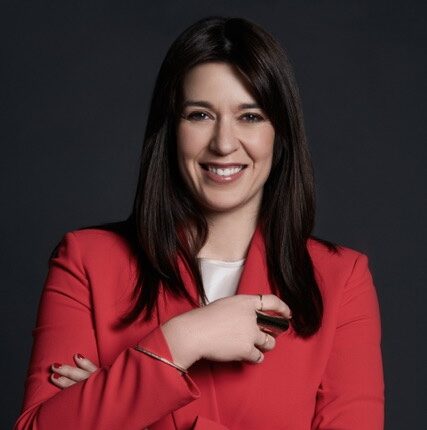The pandemic may have upended our way of life, but it doesn’t necessitate a hiring freeze. While there is a significant amount of attention on the companies that have shuttered, others have thrived. When the chaos of COVID-19 accelerated the need for supplier data, my company found itself in high demand. Features in publications and interest from investors enabled a period of rapid growth. In December 2019 our employee roster consisted of just 16 people. By the end of 2020 we had expanded to 30 and we now staff more than 80 employees, as we move forward into our planned Series B funding.
Despite the unusual circumstances, it is still possible to identify talented candidates and successfully integrate them into your corporation’s culture. As the people who were laid off during the COVID-19 pandemic look for work and the economy resurges as the population becomes vaccinated, hiring is set to grow exponentially in all sectors.
Hire for the skills you need
Developing new employee skills can become a low priority during the uncertain times of the pandemic, so it’s essential to hire people who already have the skills you need. When we selected our director of people and culture in January, we made sure she had experience scaling teams, which was key for us. Based on her expertise, we decided to take an in-house approach to hiring and to only use highly specialized recruiting firms for key roles. This approach gave us more control, saving us money and expediting our processes.
Keep diversity in mind
Last year our team of 16 came up with a list of core values that guided our decisions and how we evaluated candidates. Everyone is subject to unconscious bias. Businesses will often hire a person of the race, gender or sexuality in which they are more familiar. Diversity is essential to making everyone comfortable in the workplace and can also introduce new perspectives that homogenous groups overlook. Therefore, businesses should make an active effort to compensate for unintentional bias. For example, we want a diverse community, but research and development teams often skew male. So, when we have equal candidates, we pause and think about whether this is an opportunity to offer the position to a woman. One woman we hired had graduated at the top of her class and had a network of similarly accomplished female friends, who in turn attracted more women. Our R&D team is now 40 percent female, which is rare for a technology company.
Take advantage of remote work
Traditionally, working in person meant hiring someone who could commute to the office every day. Prior to the pandemic, most of our employee base was in Toronto or Cincinnati. If a talented engineer wanted to work with us but couldn’t relocate from Chicago, we might have been tempted to hire a less experienced applicant who lived in our area. Working and hiring remotely means we can screen applicants virtually anywhere. Applicants also have access to more job opportunities, which means the employee you hire is more likely to be passionate about the role they take. The benefits of a wide-reaching talent search are clear. Since our latest hiring spree, we now have employees in 11 states, four provinces and the UK. Adopting a national or even global talent search means companies have access to a wider pool of capable candidates than has ever been possible in human history.
Create onboarding systems
There’s only one opportunity to make a good impression, so productivity hinges on getting employees on the same page from day one. Confusion and uncertainty among new hires can be especially common during the pandemic, when face-to-face time is limited. For larger companies, a set onboarding process is the best way to avoid this problem. As we have grown, we’ve transitioned to using a system called rippling for onboarding. We use a “buddy system” to pair new workers with more experienced employees. We also formalized this process by putting people in cohorts to have meetings with different members of their team. Businesses can take advantage of momentum by sending info to new hires ahead of time, so they can hit the ground running even before their first day. In fact, we set them up ahead of their start date so they feel ready to get started on day one. Within the first few hours, they spend time with their “buddy” to get oriented. For each new hire, we ask them to provide feedback on their experience so we can continue improving.
Build culture remotely
Social distancing doesn’t mean that employees need to feel distant from the company. Working together as a business is about more than just doing the work. Communication is key to creating transparency. Meetings are opportunities to boost morale and celebrate accomplishments, which can motivate colleagues to bring their best to the office. Companies should take advantage of digital tools to spread culture and make sure goals are aligned across the board. We use Slack to keep employees in the loop. In fact, every Monday we have an all-hands-on deck meeting, where we talk about topics of interest and share updates about functions on a higher level. On Fridays we highlight people who live by our values with a “shout out” through these channels. We also do awards, celebrate anniversaries and birthdays and most importantly, encourage people to ask questions. We offer team building activities such as trivia nights and have offered a weekly zoom live yoga class as ways to bring people together. We have also recently launched programs to help our team develop new skills. Just last week, we had a group host a workshop on how to improve public speaking skills.
Focus on objectives and key results
The best way to keep a workforce focused and productive is by making goals clear and memorable. We have introduced objectives and key results (OKRs) to identify clear objectives along with three to five key results that track whether the goal is accomplished. Key results can be anything measurable, whether it be dollars, percentages or items. When hiring, we made sure to select candidates who had experience with OKRs. When we met to set our OKRs, we discussed what we wanted to achieve this year, and focused on what we need to demonstrate in advance of our series B.
This degree of focus keeps employees on track and on the same page. Employees should always remember their organization’s OKRs. One way to do this is by writing or printing them out and taping them to their desk so that they stay top of mind. When we took this approach, we received feedback that everyone in the organization felt they could make an impact on the OKRs. We review OKRs every week to track progress and identify potential gaps. We have quarterly reviews to make sure they still apply or discuss the need to make changes. This is a team effort; we get a lot of discussion out of the process itself.
If there is anything that I’ve learned from the pandemic and our rapid growth, it’s that change is inevitable. Workforces aren’t just made through hiring practices, they’re built through effective onboarding, communication and agreed upon objectives. One unexpected silver lining is that the pandemic has created new opportunities to hire talented workers who would have otherwise been too far away from the business to consider in the past. The pandemic doesn’t have to throw a wrench in creating a more capable workforce. By using technology to build culture and onboard new hires, businesses can thrive.
















